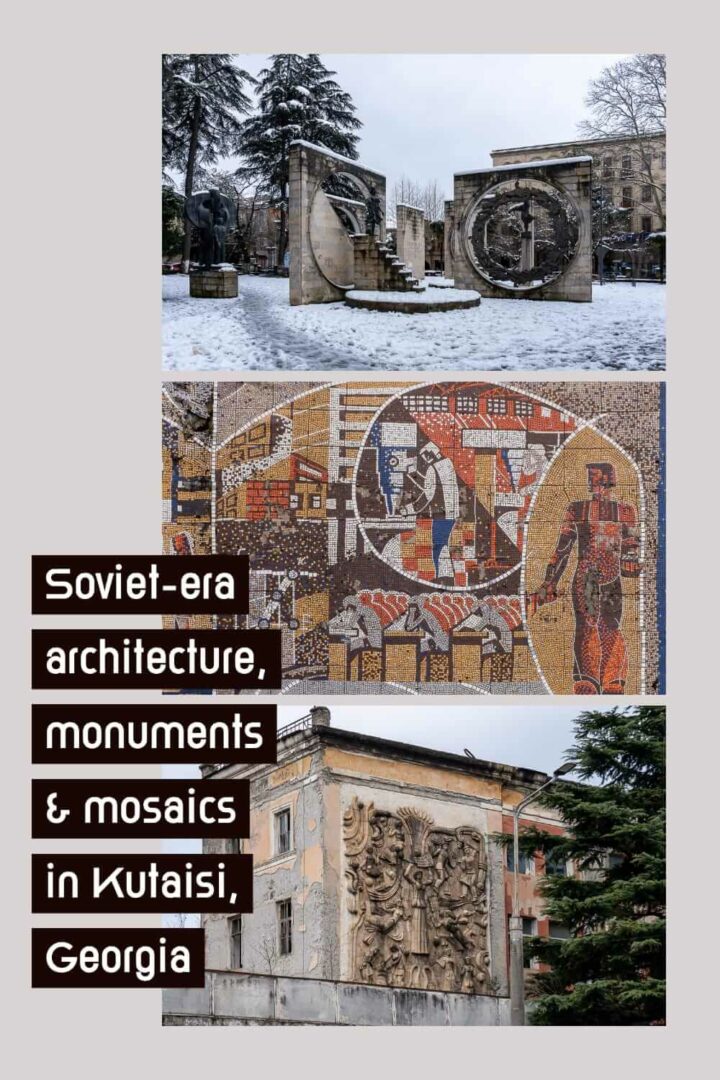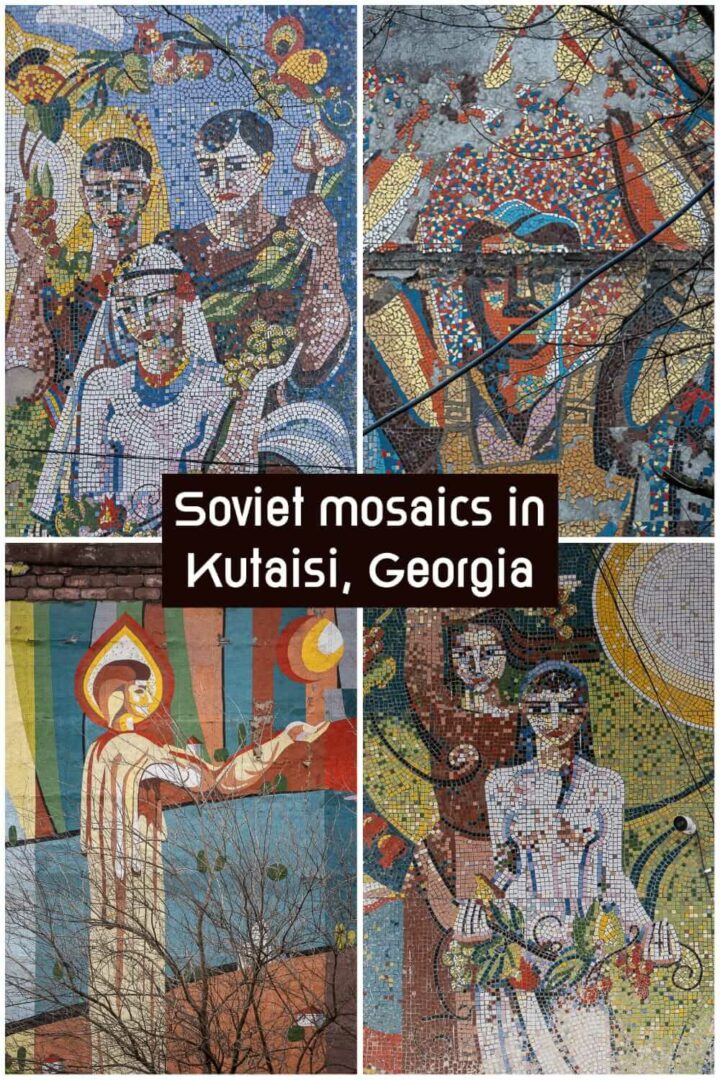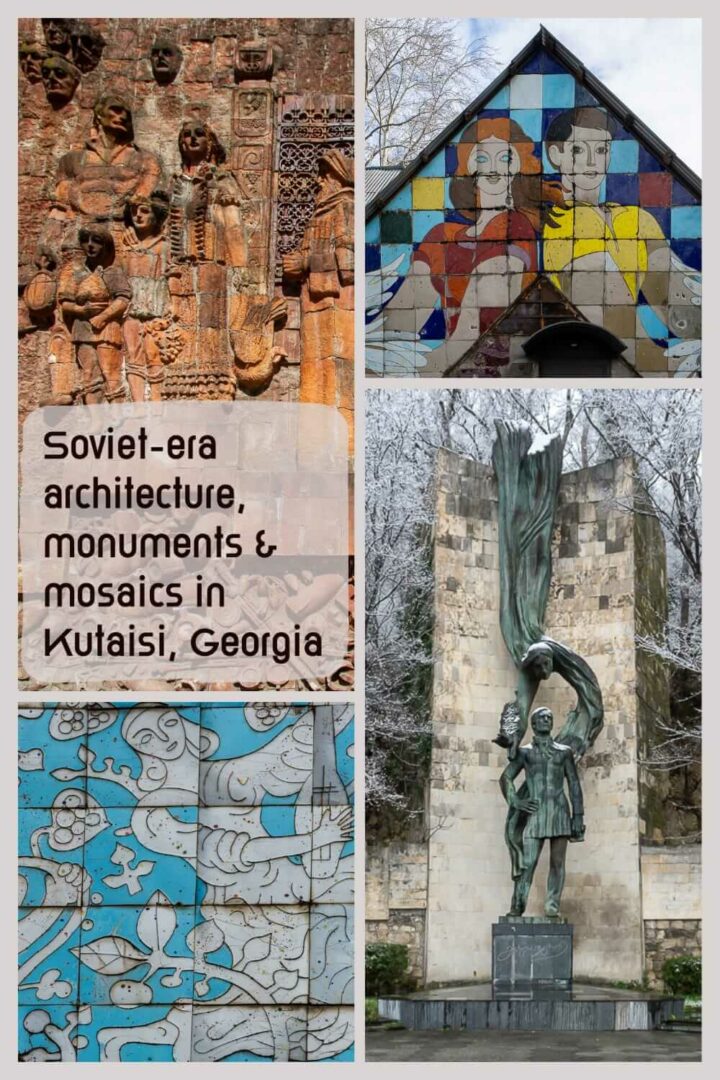Where to find Kutaisi’s Soviet architecture, mosaics and monuments including a map of locations
Georgia was a Soviet Socialist Republic and part of the USSR from 1921 until 1991 when it became an independent country once again. Although Kutaisi isn’t on a par with Tbilisi, or even some of the other destinations we have visited in Georgia, when it comes to architecture and other remnants from the country’s communist past, there is enough to warrant extending your time in the city by a day or two if the style of architecture and monumental art interests you.
This is particularly the case if you combine hunting for Soviet relics in Kutaisi with a day exploring the nearby spa town of Tskaltubo, where there is an abundance of (mostly abandoned) architecture from the same period.
Also, check out our more conventional guide about what to see and do in Kutaisi.
Map of locations for Soviet-era architecture, monuments and mosaics in Kutaisi, Georgia
Soviet-era architecture in Kutaisi
Unidentified buildings Tbilisi – Senaki – Leselidze Highway
There are two classic examples of Soviet Modernist architecture on the southern outskirts of the city, close to the Kutaisi Sports Palace. The red one was occupied but it was difficult to tell if the other one was in use or not.
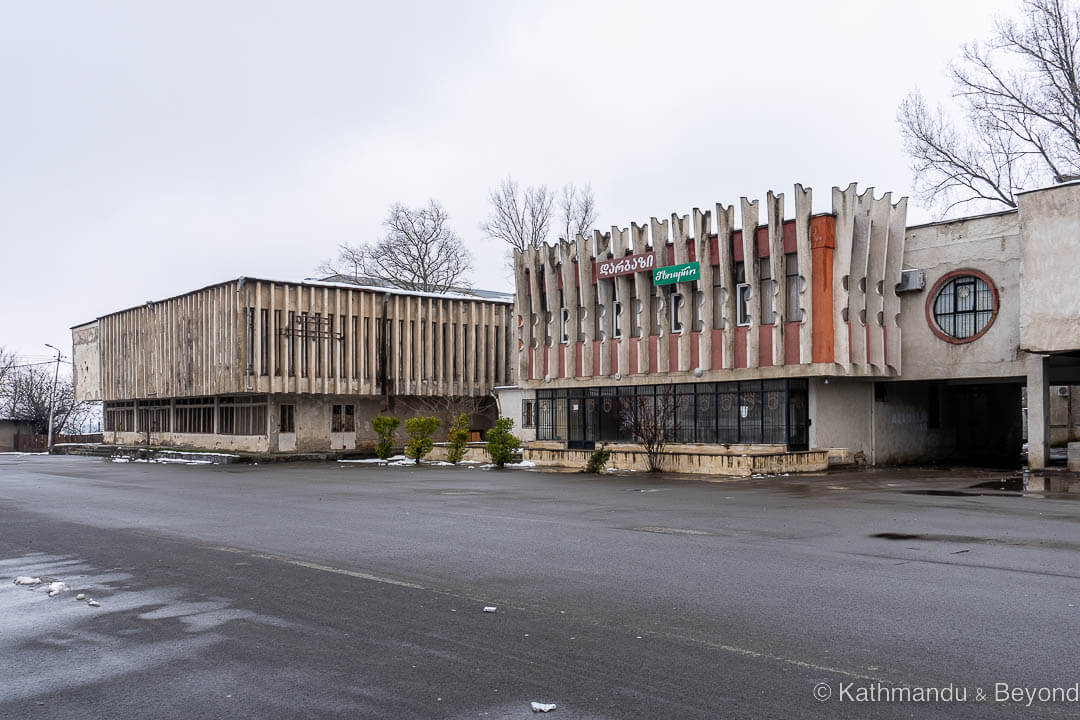
Residential building (Shota Rustaveli Avenue)
Located at a busy intersection, this 8-storey residential building is noteworthy for the panels that decorate its facade.
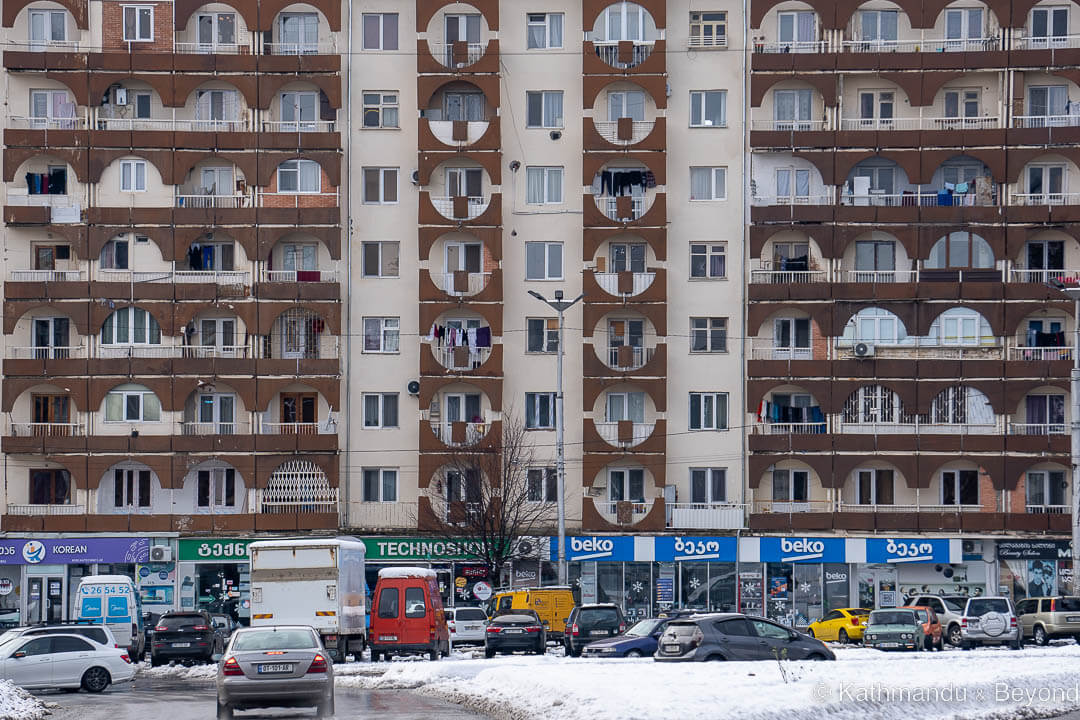
Residential building (Kutaisi-Khoni-Samtredia Highway)
This residential building is typical of those found all over the former Soviet Union.
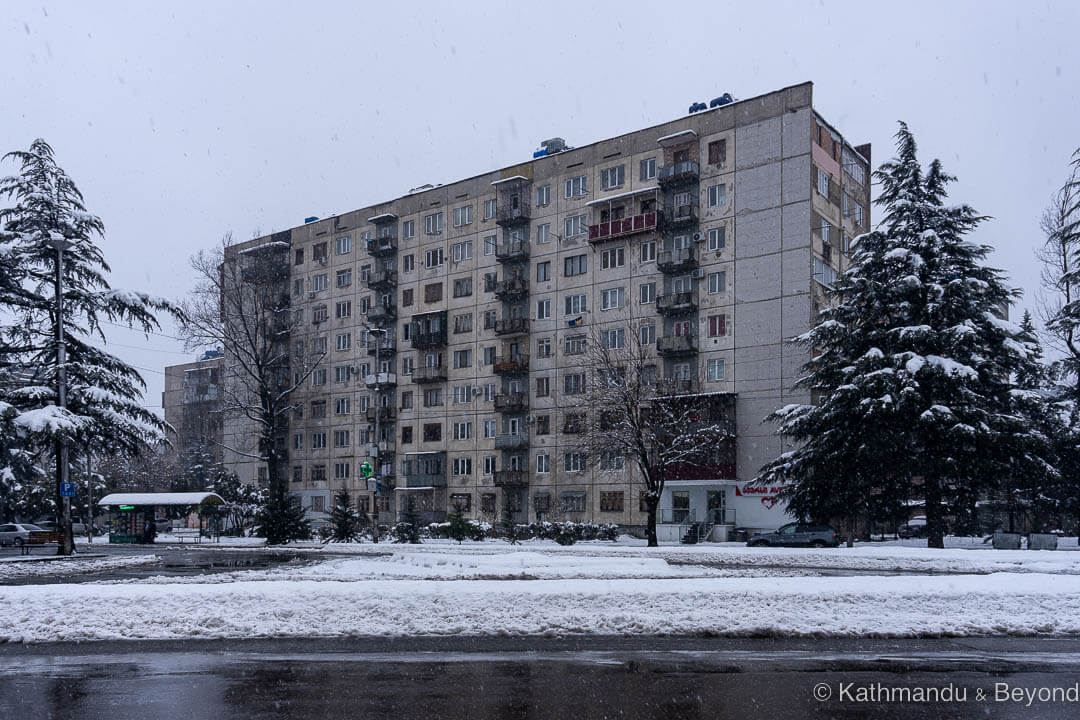
Joint Stock Company ’Electromechanicosy’ Cultural Centre
Designed in Stalin-Empire style architecture, the building had a heritage plaque near the entrance that describe its function as a cultural centre but it didn’t look like it was still being used for that purpose. The cultural centre likely dates from the late 1940s/early 1950s.
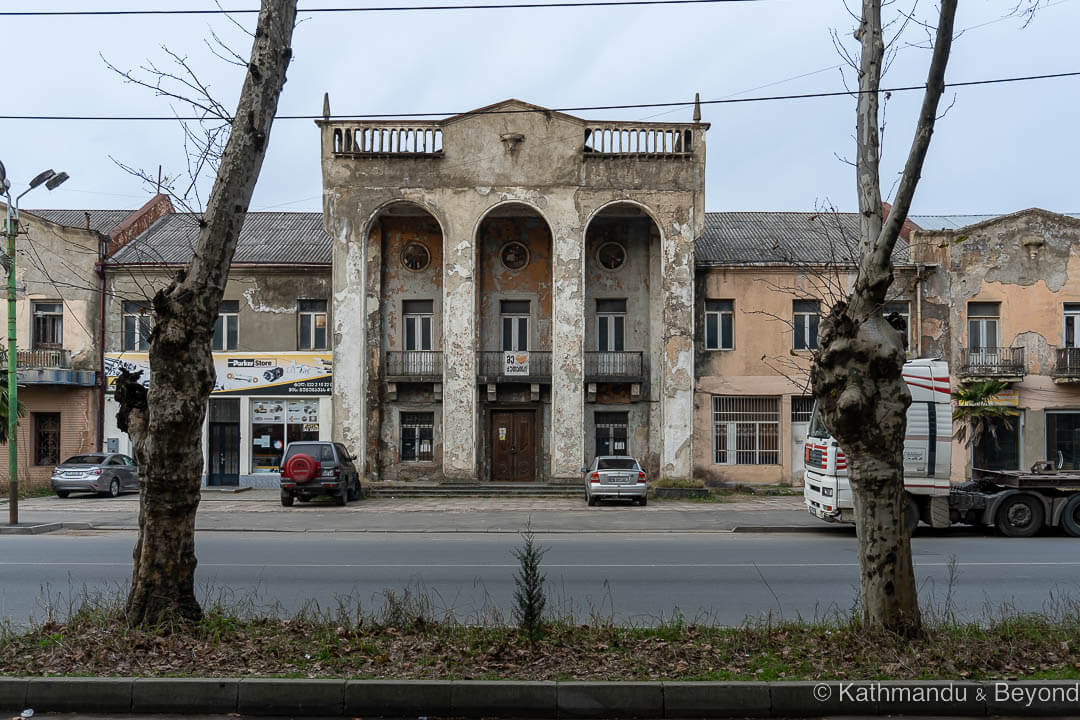
Soviet-era monuments and memorials in Kutaisi
Monument to Vazha-Pshavela
Vazha-Pshavela was the pen name of Luka Razikashvili (1861-1915), a renowned Georgian poet who wrote around 400 poems as well as epics, stories, plays and academic articles. Most of his works centred around the everyday life and mindset of the people of Pshavi, a historic region of northeastern Georgia which is nowadays part of Mtskheta-Mtianeti and where Vazha-Pshavela was from. The monument was created in 1989 and is the work of sculptor, Giorgi Avalishvili.
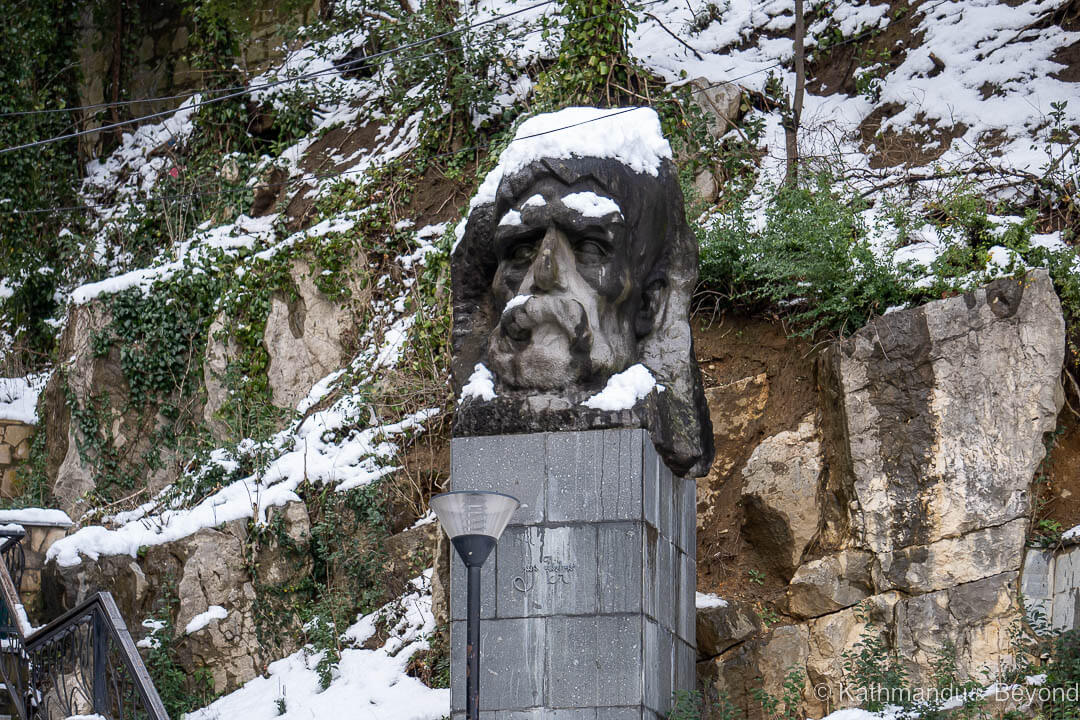
Monument to Galaktion Tabidze
Known simply as Galaktioni, Galaktion Tabidze (1892-1959) was another famous Georgian poet, whose work greatly inspired future generations of Georgian poets. Galaktioni managed to survive Stalin’s Great Purge in the mid-to-late 1930s when many of his contemporaries did not. However, the period sent him into a deep depression and alcoholism and he eventually committed suicide in a Tbilisi psychiatric hospital where he had been since early 1959. This monument was created in 1990, just as the Soviet Union was about to break up, and is the work of sculptor, George Shkhvatsabaia.
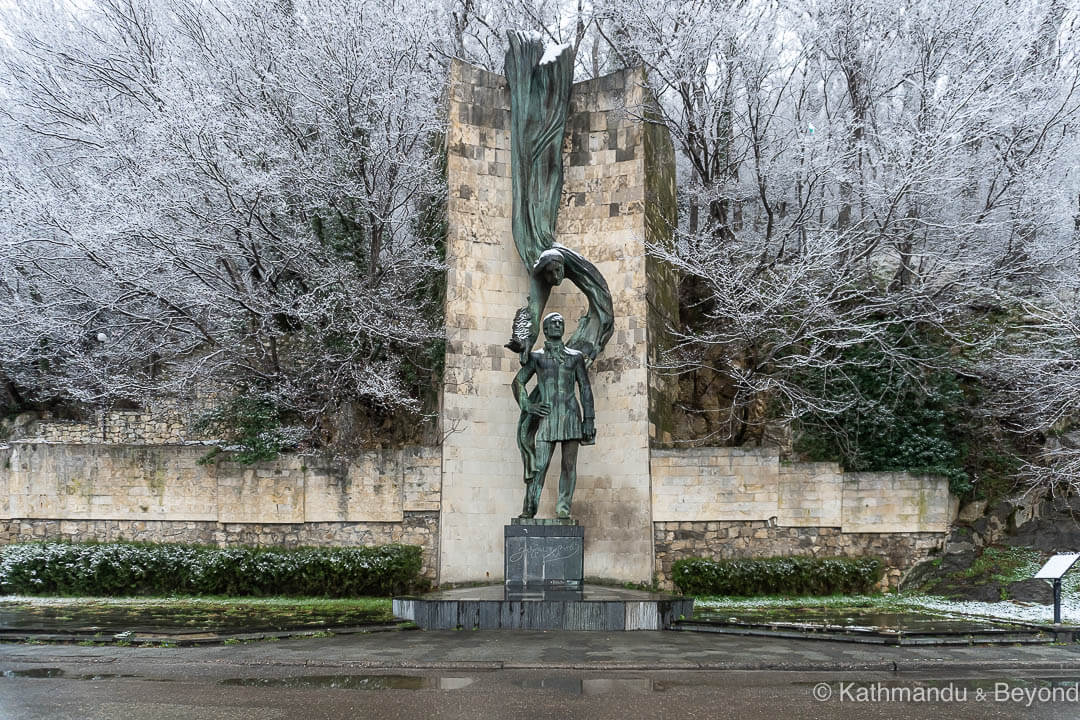
Glory to Labour Monument
This abstract monument in the centre of Kutaisi dates from 1980 and was created by sculptors, E. Amashukeli and I. Bastanashvili.
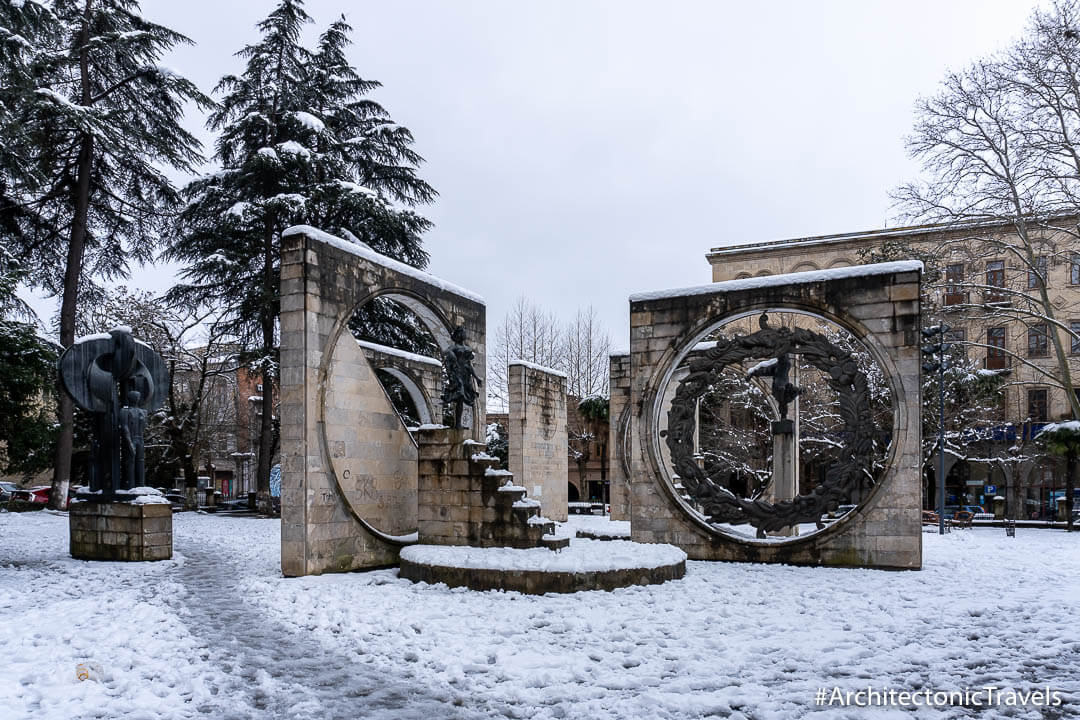
Soviet-era mosaics in Kutaisi
There are a handful of decent panel mosaics scattered around the outskirts of Kutaisi. All but one are situated within walking distance of Chavchavadze Avenue/the main bus station, which can easily be reached from the centre of the city on city bus number 1.
Apartment building 62 Chavchavadze Avenue
Representative of the city’s importance as a manufacturing hub during Soviet times, this large and detailed mosaic is the most impressive in Kutaisi. The prominent features of the design are factory workers and industrial machinery. The mosaic is in good condition considering this style of monumental art is rarely preserved these days.
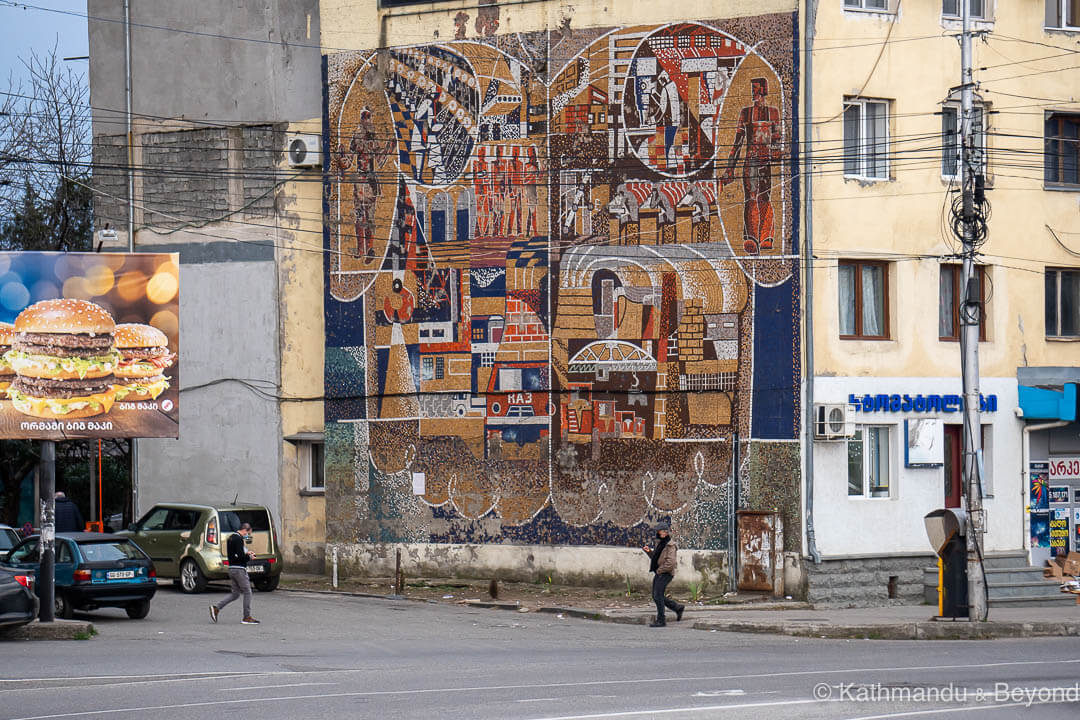
Apartment building 44 Chavchavadze Avenue
This mosaic is abstract in design and not in as good a condition as its building 62 counterpart on the same street.
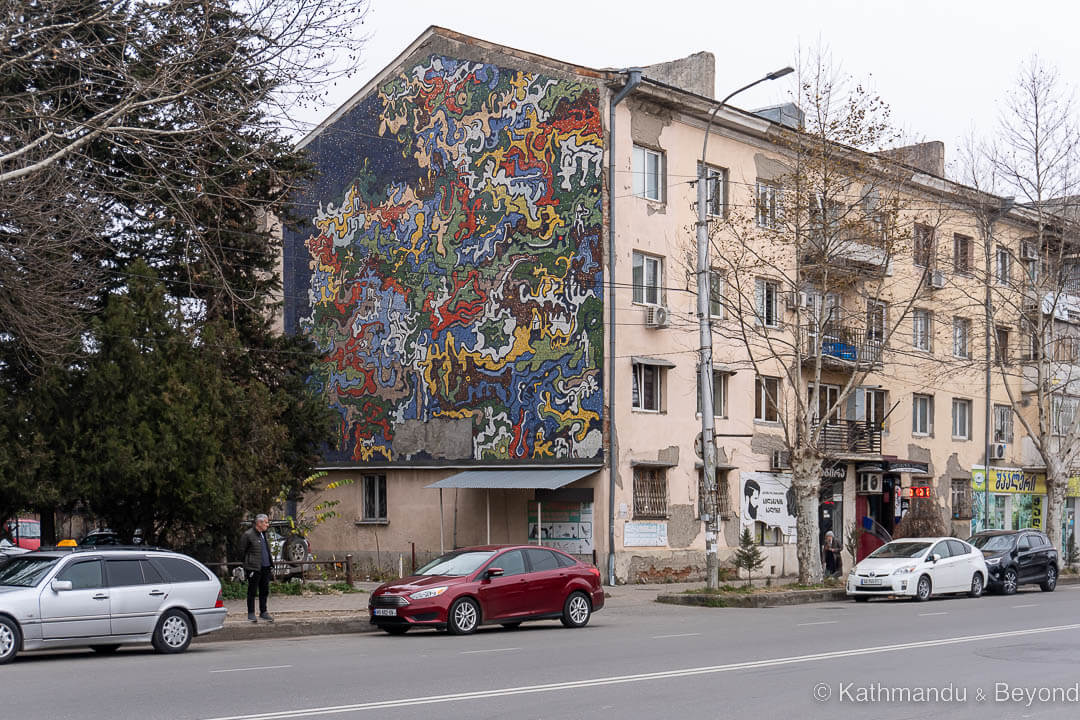
Imedi Secondary School
Two sections of panel art decorate this school. There is also an abandoned factory around the back of the school but it has been stripped to the bare bones and there is nothing really to see.
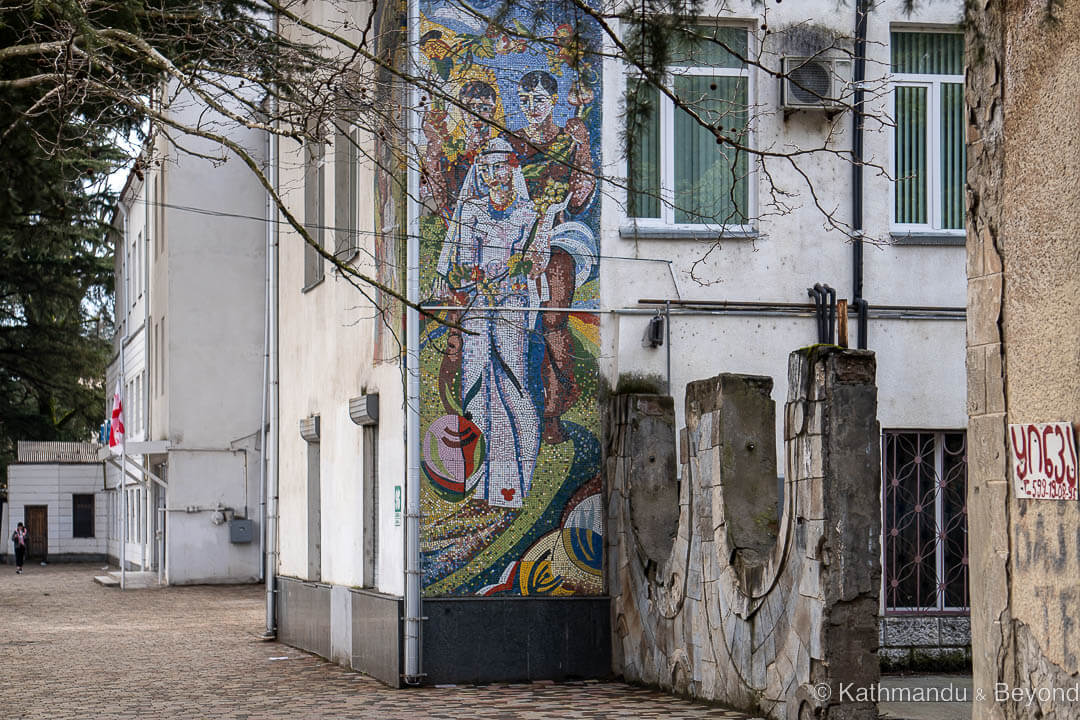
Former garment factory
Situated on a side road off the main Tbilisi-Senaki-Leselidze Highway, the factory has a few sections of mosaic art running along its frontage that would have looked pretty impressive when completed. Unfortunately, most of it is now in poor condition.
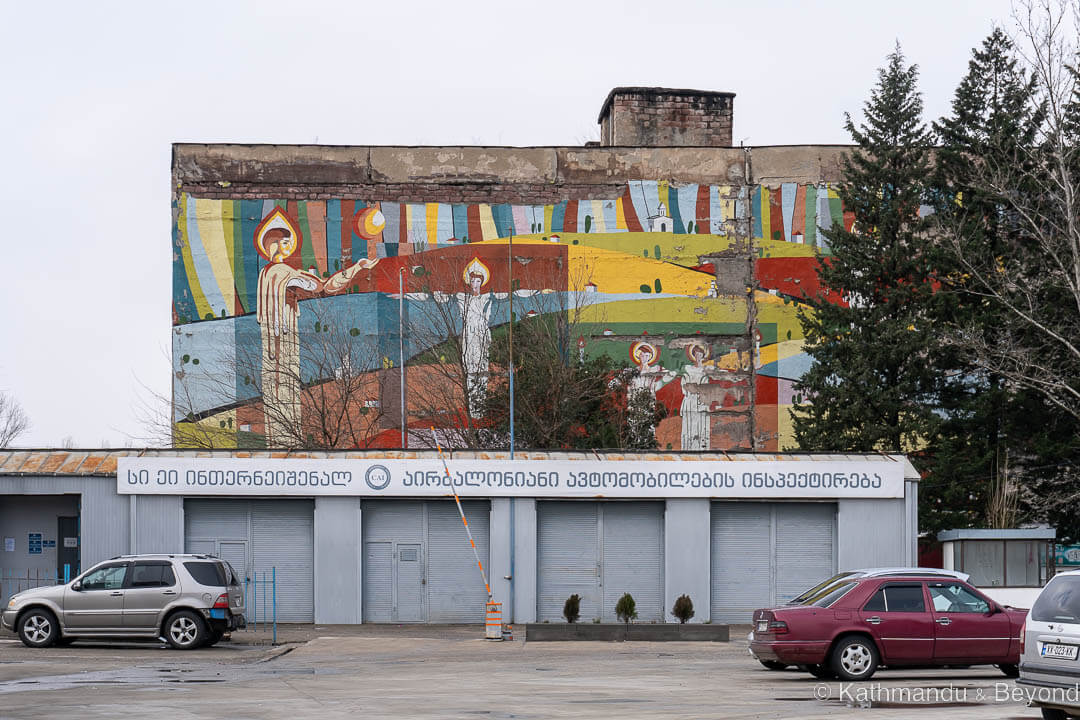
Former electro-mechanical factory
The main panel at this former factory features male and female workers in typical Soviet poses but the figures are difficult to make out, not just because sections of the mosaic have deteriorated over time but also because there are trees in front obscuring the view. In fact, if you visit outside of the winter months when there are leaves on the trees, your chances of seeing anything of this particular mosaic are slim to zero. There are the remains of a sports-related mosaic at the western end of the factory and another wall displaying abstract mosaic art to the east of the main entrance.
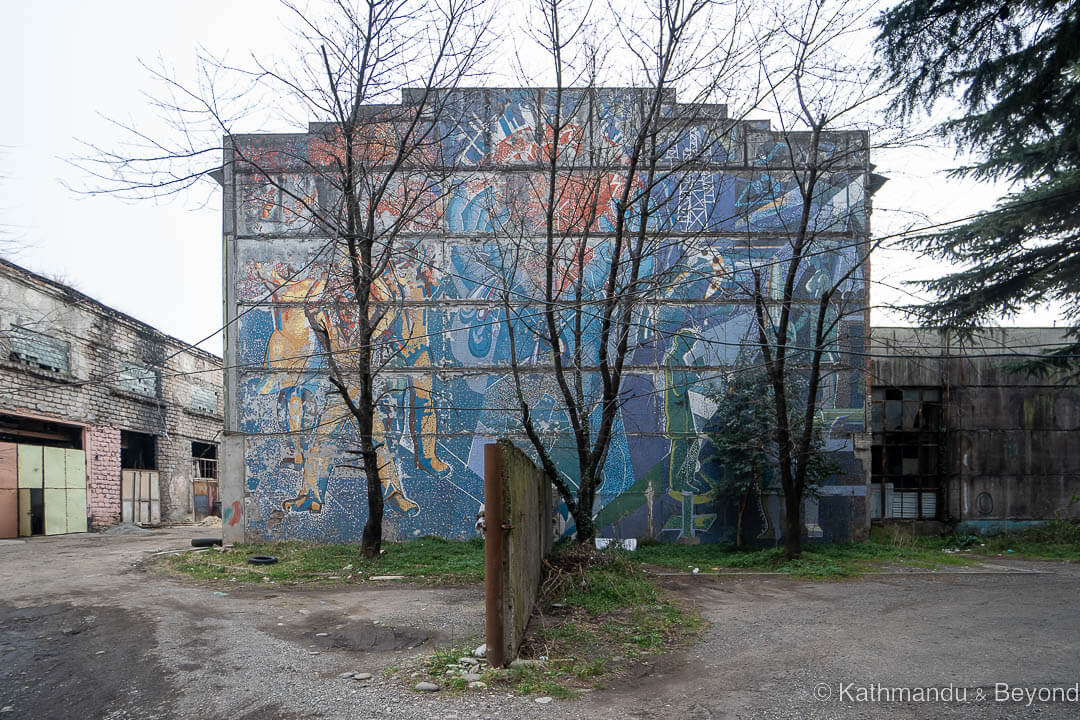
Former tea pavilion
Out on a limb but worth searching out, this artwork was created using tiles rather than tiny pieces of mosaic. The building is decorated with a profusion of different characters, including peace doves as well as a male and female young pioneer. The tea pavilion is now a grocery/convenience store and it was obvious that sections of artwork had either been covered up with new signage or ruined to make way for new means of entering the building. The owners asked us what we were doing when we visited this one but were happy to leave us in peace once we explained our purpose.
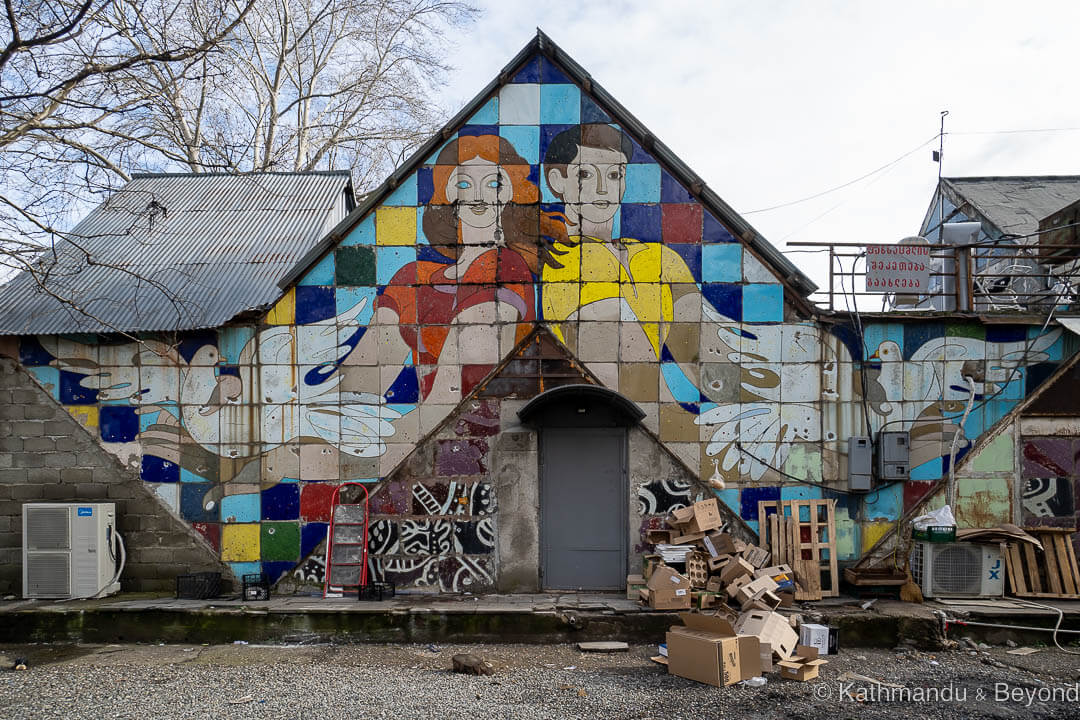
Things don’t always go to plan when we’re searching out mosaics and monuments in the former Soviet Union…
This is the story of how we got escorted off a hydroelectric dam near Kutaisi by a man with a gun!
It’s not as bad as it sounds! There is an impressive mosaic inside Vartsikhe Hyrdo Station on the Rioni River, about 15kms south of Kutaisi. Although we weren’t hopeful of seeing it, we had nothing else to do one afternoon so we thought we would give it a shot. We managed to get to the dam entrance and even found a security guard who in turn found one of the workers to come and speak to us. We explained (in very broken Russian) what we were wanting to see and, contrary to what we were expecting, he got on the radio to someone in the hydro station, opened the gate and told us to go see a man with a beard who was wearing a florescent jacket like his.
A nice result, we thought!
When we got there, the guy with the beard eventually turned up but we were (politely) told that entrance was forbidden. This was backed up by a couple of other security staff. We said our goodbyes and started walking along a different, and extremely muddy, route back to the main road. It was at this point that a security patrol car turned up. The officer driving it was firm but friendly and in no uncertain terms told us we couldn’t be where we were. The fact that he had a rifle on the front seat meant he got no argument from us and we started to head along the muddy track in the direction of the road. He must have felt sorry for us slipping and sliding in the mud, either that, or he just wanted rid of the two idiot foreigners, because he promptly pulled up, and drove us to a convenient spot to catch a marshrutka back to town. He even waited to make sure we got on one!
Credit and Resources
We locate and learn about Soviet-era mosaics in Georgia with the help of two excellent sources. The first is a book titled Art for Architecture Georgia: Soviet Modernist Mosaics from 1960 to 1990 by Lena Prents and Nini Palavandishvili. The book is full of detail and each of the featured mosaics in the publication includes a barcode that, when scanned using your phone, takes you to an exact location on Google Maps.
Our other go-to resource is an online map titled Late Soviet Modernism and Soviet Period Mosaics in Georgia. This is another amazingly helpful tool that lists even more mosaics than are included in the book, along with the locations for a lot of Soviet Modernist architecture, as well.
We are grateful for the effort that has gone into both the book and the map. Our only gripe, and I’m reluctant to mention this as it is such a fabulous resource, is that the map is not kept up to date. Quite a few of the mosaics listed no longer exist, having been destroyed or perished of their own accord, and the only way we discovered this is by spending time and effort looking for them. In Kutaisi alone, for example, three of the eight locations listed on the map are not there anymore, and we have had similar experiences in other cities and towns around Georgia.
Soviet-era bas-relief in Kutaisi
“Kolkheti”/“Colchis”
The entire wall of the western entrance to Green Bazaar, Kutaisi’s covered market, is decorated with the most fantastically ornate ceramic panel entitled “Kolkheti”, or more commonly “Colchis”.
Kolkheti (pre-Hellenistic Greco-Roman name), or more commonly Colchis (an exonym), was a prehistoric region that dates back to the 17th century BCE. Centred on the Black Sea coast and associated with the Argonauts, Colchis is often viewed as the birthplace of the nation of Georgia. There is archaeological evidence to suggest that the settlement of Kutaisi served as the political centre and capital of the Kingdom of Colchis.
The monumental art, which is made from terra cotta, was created in a studio by Georgian artist, Bernard ‘Franz’ Nebieridzeby between 1980 and 1985. Nebieridzeby passed away in 1987 and, supported by the efforts of his family and local government officials, the bas-relief was erected on the side of the market in 1995.
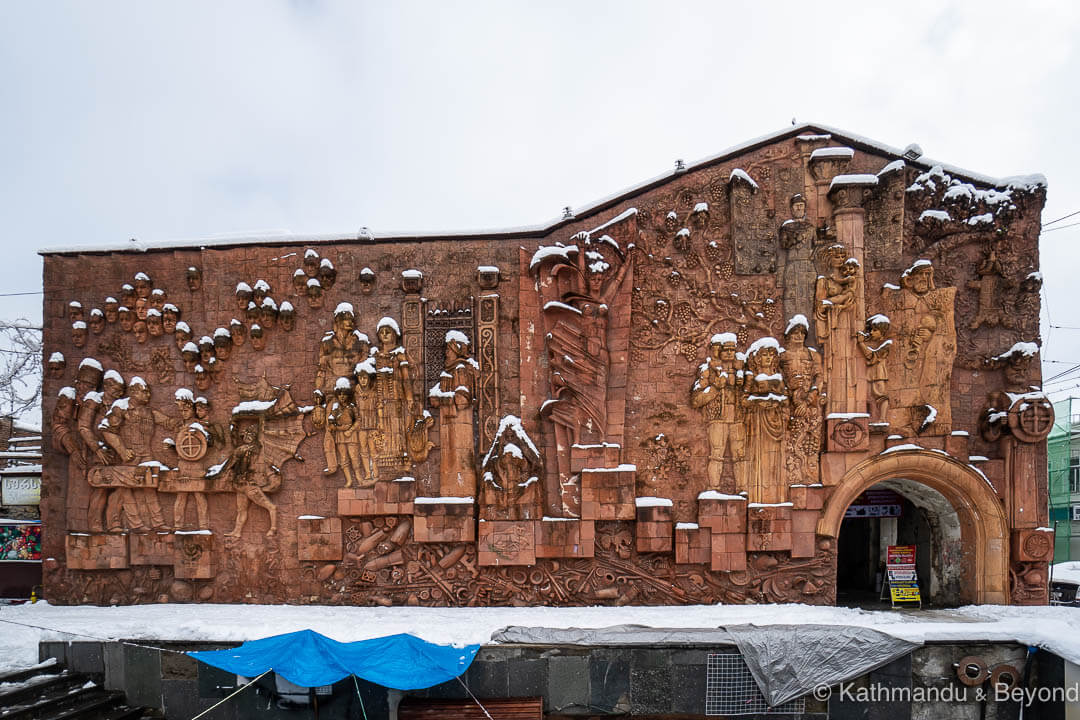
National Museum of Military Glory
There is a series of military-themed bas-reliefs running along the outer wall of this small museum in the heart of the city. Inside, there are artefacts associated with various Georgian military campaigns, including the Great Patriotic War (World War II) as well as more recent events such as the conflicts with Abkhazia and South Ossetia.
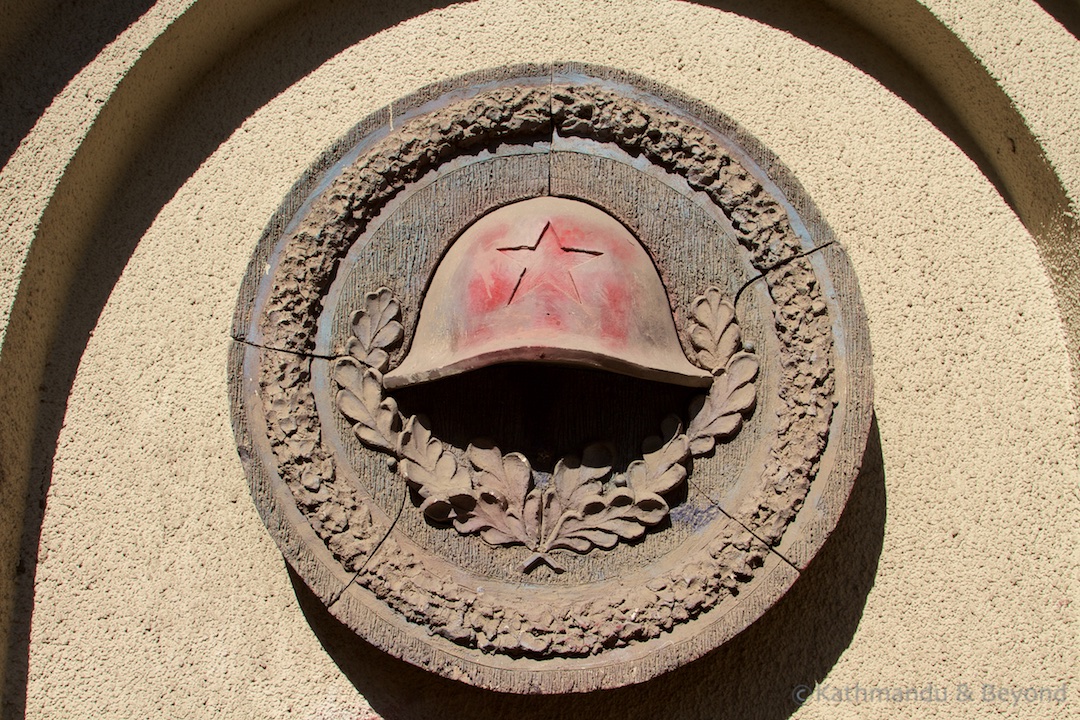
Former factory (Tbilisi – Senaki – Leselidze Highway)
Located across the road and river from the two examples of Soviet Modernist buildings mentioned above, the bas-relief above one of the entrances to this former factory, which is guarded by a couple of shouty dogs, is ornate but not in especially good condition. To the side of another entrance are the faint remains of a once-colourful mosaic.
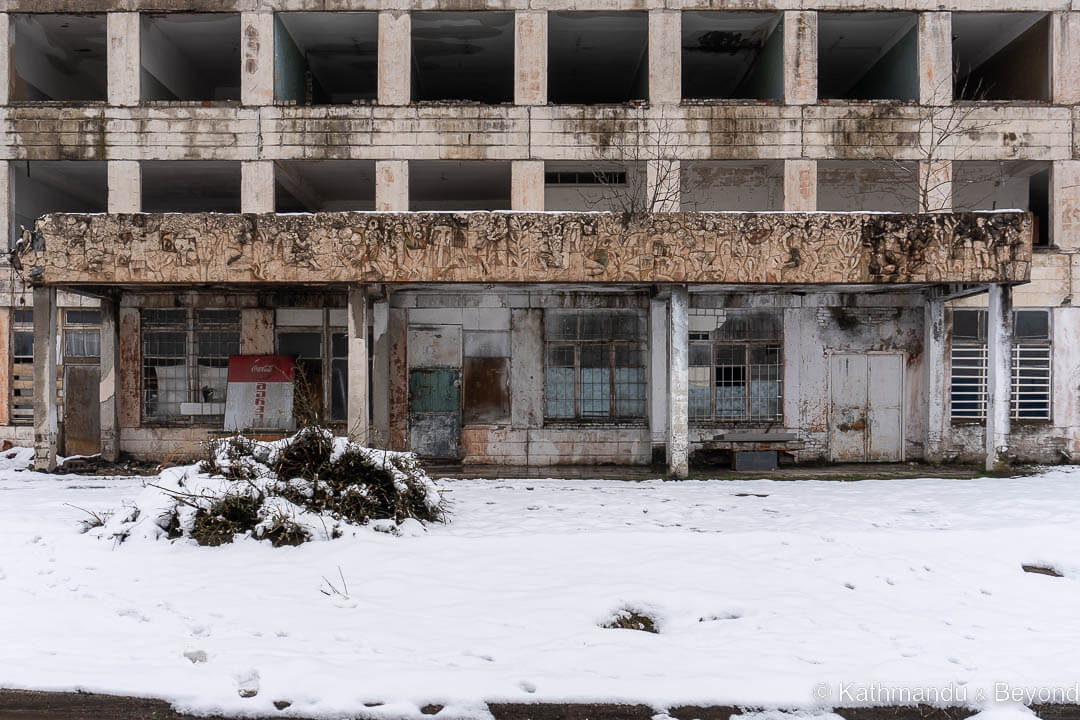
Residential building (Nikea Street)
This is a nice piece of bas-relief depicting scenes from Georgian culture. The work is in pretty good condition given that the actual building is not.
Update 2023; The building, including the bas-relief, was demolished at some point after our visit in January 2022.
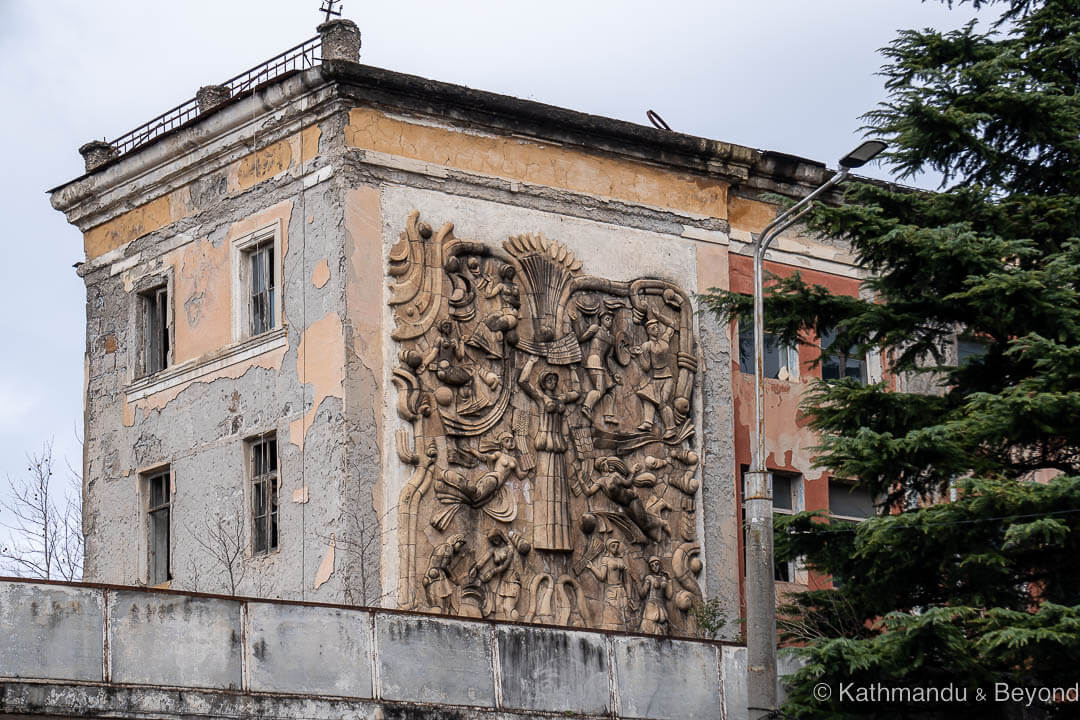
More posts you might like to read
And if you enjoyed our guide to Soviet-era architecture in Kutaisi, please share it…
